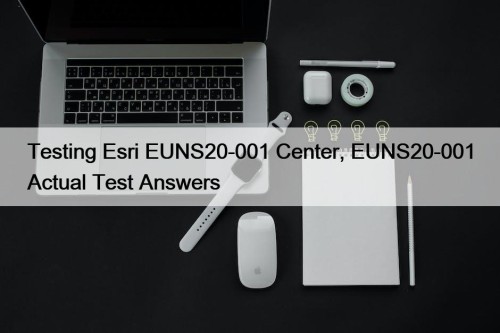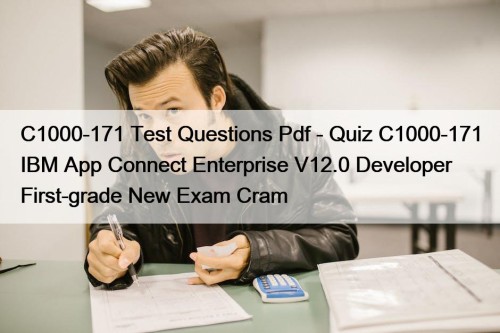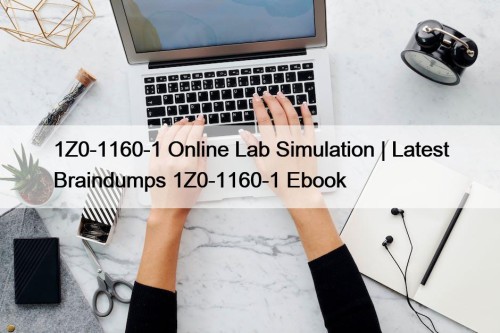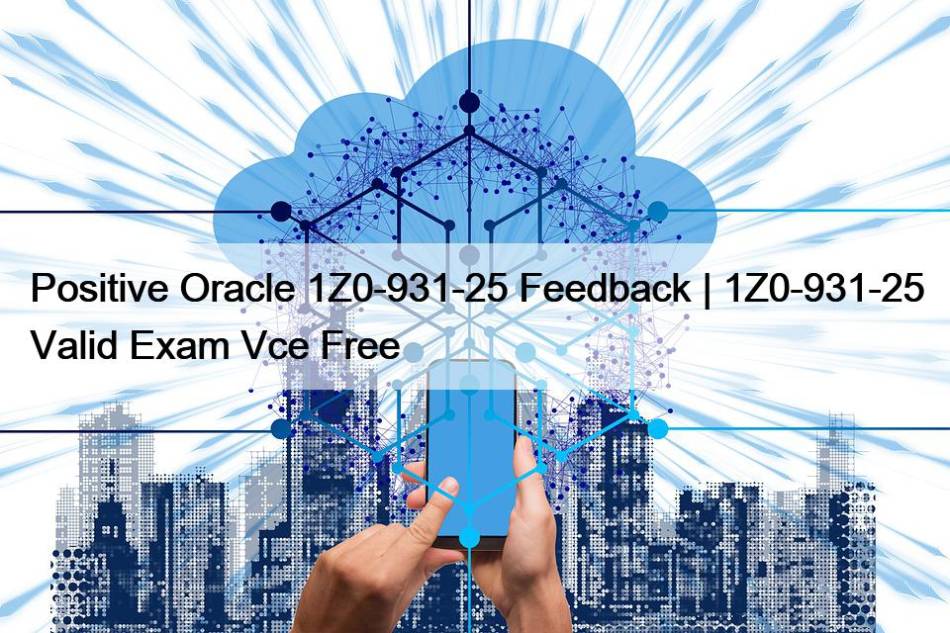Most Popular
 Testing Esri EUNS20-001 Center, EUNS20-001 Actual Test Answers
Testing Esri EUNS20-001 Center, EUNS20-001 Actual Test Answers
There is a lot of data to prove that our ...
 C1000-171 Test Questions Pdf - Quiz C1000-171 IBM App Connect Enterprise V12.0 Developer First-grade New Exam Cram
C1000-171 Test Questions Pdf - Quiz C1000-171 IBM App Connect Enterprise V12.0 Developer First-grade New Exam Cram
BTW, DOWNLOAD part of ITExamSimulator C1000-171 dumps from Cloud Storage: ...
 1Z0-1160-1 Online Lab Simulation | Latest Braindumps 1Z0-1160-1 Ebook
1Z0-1160-1 Online Lab Simulation | Latest Braindumps 1Z0-1160-1 Ebook
May be you will meet some difficult or problems when ...



Positive Oracle 1Z0-931-25 Feedback | 1Z0-931-25 Valid Exam Vce Free

With only one Oracle 1Z0-931-25 exam you can do this job nicely and easily. To do this just enroll in the Oracle 1Z0-931-25 certification exam and download the updated and real Oracle 1Z0-931-25 Exam now and start this journey today. We are quite confident that with 1Z0-931-25 exam dumps you can pass the upcoming Oracle Autonomous Database Cloud 2025 Professional exam in the first attempt.
Oracle 1Z0-931-25 Exam Syllabus Topics:
| Topic | Details |
|---|---|
| Topic 1 |
|
| Topic 2 |
|
| Topic 3 |
|
| Topic 4 |
|
| Topic 5 |
|
| Topic 6 |
|
| Topic 7 |
|
>> Positive Oracle 1Z0-931-25 Feedback <<
Oracle 1Z0-931-25 Realistic Positive Feedback Free PDF Quiz
To attain this you just need to enroll in the 1Z0-931-25 certification exam and put all your efforts to pass this challenging 1Z0-931-25 exam with good scores. However, to get success in Oracle 1Z0-931-25 dumps PDF is not an easy task, it is quite difficult to pass it. But with proper planning, firm commitment, and Oracle 1Z0-931-25 Exam Questions, you can pass this milestone easily. The VCE4Plus is a leading platform that offers real, valid, and updated Oracle 1Z0-931-25 Dumps.
Oracle Autonomous Database Cloud 2025 Professional Sample Questions (Q28-Q33):
NEW QUESTION # 28
A Business Analyst joined your organization and wants to explore the database tools. When restoring or cloning an Autonomous Database (ADB), you must select a backup that is at least how old?
- A. 24 hours
- B. 2 hours
- C. 5 minutes
- D. 1 day
Answer: A
Explanation:
Full Detailed In-Depth Explanation:
When restoring or cloning an Autonomous Database (ADB), Oracle enforces a minimum backup age to ensure data consistency and integrity. The official Oracle documentation specifies that backups used for these operations must be at least 24 hours old. This requirement exists because:
Backups need time to complete and stabilize, ensuring all transactions are fully committed and the backup is consistent.
Recent backups (e.g., less than 24 hours old) may still be in progress or lack full verification, risking incomplete or corrupted restores/clones.
Options B (5 minutes), C (2 hours), and D (1 day) are either too short or redundant:
5 minutes and 2 hours: Too recent, violating the 24-hour rule.
1 day: Matches 24 hours but is less precise than the explicit "24 hours" phrasing in the documentation.
For the Business Analyst's exploration, they can access tools like SQL Developer Web or Data Load via the OCI Console under the "Tools" tab, but this question focuses on the backup age constraint, making A the best answer.
NEW QUESTION # 29
What two actions can you do when a refreshable clone passes the refresh time limit? (Choose two.)
- A. You can disconnect from the source to make the database a read/write database
- B. You can use the instance as a read-only database
- C. You can manually refresh the clone
- D. You can extend the refresh time limit
Answer: A,B
Explanation:
A refreshable clone in Autonomous Database is a read-only copy of a source database that syncs periodically, but it has a refresh time limit (typically 7 days). Once this limit is exceeded, specific actions are available. The two correct options are:
You can disconnect from the source to make the database a read/write database (B): After the refresh time limit passes, the clone can no longer sync with the source. You can "disconnect" it (via the OCI console or API, e.g., oci db autonomous-database update --is-refreshable-clone false), converting it into an independent, read/write Autonomous Database. This requires a new license and incurs full costs, but it allows modifications (e.g., INSERT or UPDATE) that were blocked in read-only mode. For example, a test clone might be disconnected to become a production instance after testing.
You can use the instance as a read-only database (C): Even after the refresh limit, the clone remains functional as a read-only database, retaining its last refreshed state. You can query it (e.g., SELECT * FROM sales) for analysis or reporting without further refreshes, though it won't reflect source updates. This is useful if ongoing read-only access suffices without needing write capabilities.
The incorrect options are:
You can manually refresh the clone (A): False. Once the refresh time limit (e.g., 7 days) is exceeded, manual refreshes are not possible. The clone's refresh capability expires, and it can't sync again unless recreated. This is a fixed constraint to manage resource usage in ADB.
You can extend the refresh time limit (D): False. The refresh period (set during clone creation, max 7 days) cannot be extended after provisioning. You'd need to create a new clone with a longer limit if needed, but post-expiry, no extension is allowed.
These options provide flexibility post-expiry, balancing read-only continuity and full database conversion.
NEW QUESTION # 30
Which statement is FALSE about Oracle Autonomous JSON Database?
- A. You can promote Autonomous JSON Database to Autonomous Transaction Processing.
- B. JSON data is stored natively in the database.
- C. There is a 20 GB limit on JSON collection.
- D. It supports NoSQL-style, document-centric applications.
Answer: C
Explanation:
Full Detailed In-Depth Explanation:
The Oracle Autonomous JSON Database is a specialized service for managing JSON data with NoSQL-style capabilities. Let's evaluate each statement:
A . It supports NoSQL-style, document-centric applications: True. Autonomous JSON Database is designed for NoSQL workloads, supporting document-based applications via APIs like SODA (Simple Oracle Document Access).
B . There is a 20 GB limit on JSON collection: False. The Oracle documentation does not specify a fixed 20 GB limit on JSON collections. Storage capacity is determined by the overall database size, which can scale dynamically without a specific cap on individual collections. This makes B the false statement.
C . JSON data is stored natively in the database: True. JSON data is stored in a binary format optimized for performance, avoiding the need for parsing or transformation during access.
D . You can promote Autonomous JSON Database to Autonomous Transaction Processing: True. Oracle allows promoting an Autonomous JSON Database to ATP, enabling relational capabilities if application needs evolve.
The false claim about a 20 GB limit likely stems from confusion with other database constraints, but no such restriction exists for JSON collections in Autonomous JSON Database.
NEW QUESTION # 31
Which statement is true when you provision an Autonomous Database using the cloning method?
- A. There is only one type of cloning option available in Autonomous Database.
- B. A clone database source can be a running database instance.
- C. A clone database source can be from a point-in-time backup that is less than 2 hours old.
- D. You can clone a database in a security zone to create a database that isn't in a security zone.
Answer: B
Explanation:
Cloning in Autonomous Database creates a new instance from an existing source:
Correct Answer (A): "A clone database source can be a running database instance" is true. You can clone from a live, running Autonomous Database instance (full clone), capturing its current state, including data and configuration, without needing to stop it.
Incorrect Options:
B: There are multiple cloning types: full clone (from a running instance) and refreshable clone (a read-only copy that syncs with the source), plus cloning from backups.
C: Cloning from a backup requires the backup to be at least 2 hours old for consistency, not less, making this false.
D: Security zone rules prevent cloning a database from a security zone to a non-security zone due to compliance restrictions.
This flexibility supports rapid provisioning from active databases.
NEW QUESTION # 32
Which two are correct actions to take in order to download the Autonomous Database Credentials? (Choose two.)
- A. Find the service console for your Autonomous Database, then pick administration, then download the credential wallet
- B. Click the compute section of the menu, then choose instance configurations, then download wallet
- C. Click on the Object Storage and find your Autonomous bucket and download the wallet credentials
- D. Click on the Autonomous Database in the menu, click a database name, then choose DB Connection button, then download the wallet
Answer: A,D
Explanation:
Downloading Autonomous Database credentials (client wallet) is necessary for secure connections. The two correct actions are:
Find the service console for your Autonomous Database, then pick administration, then download the credential wallet (B): In the OCI console, navigate to the Autonomous Database service console (e.g., via the "Database" section). Select your ADB instance, go to the "Administration" tab, and click "Download Client Credentials (Wallet)." You'll set a password and download a ZIP file containing files like tnsnames.ora and certificates. This method is straightforward for DBAs managing the instance directly from its service page.
Click on the Autonomous Database in the menu, click a database name, then choose DB Connection button, then download the wallet (D): From the OCI console's main navigation, go to "Autonomous Database," select your database by name, and click the "DB Connection" button on the details page. Then, select "Download Wallet," provide a password, and download the ZIP file. This is a common path for users accessing connectivity details directly from the database overview.
The incorrect options are:
Click the compute section of the menu, then choose instance configurations, then download wallet (A): The "Compute" section is for virtual machines, not databases. Credentials are tied to the ADB service, not compute instances.
Click on the Object Storage and find your Autonomous bucket and download the wallet credentials (C): Object Storage holds user data or backups, not the wallet credentials, which are generated and downloaded from the ADB service interface.
Both B and D provide secure access to the wallet for tools like SQL Developer.
NEW QUESTION # 33
......
We strongly recommend using our Oracle Autonomous Database Cloud 2025 Professional (1Z0-931-25) exam dumps to prepare for the Oracle 1Z0-931-25 certification. It is the best way to ensure success. With our Oracle1Z0-931-25 practice questions, you can get the most out of your studying and maximize your chances of passing your Oracle 1Z0-931-25 Exam. VCE4Plus Oracle 1Z0-931-25 practice test VCE4Plus is the answer if you want to score higher in the 1Z0-931-25 exam and achieve your academic goals.
1Z0-931-25 Valid Exam Vce Free: https://www.vce4plus.com/Oracle/1Z0-931-25-valid-vce-dumps.html
- 1Z0-931-25 Exam Brain Dumps 🔔 New 1Z0-931-25 Braindumps Free 😦 1Z0-931-25 Latest Exam Pdf 🙃 Search for 《 1Z0-931-25 》 and download it for free on “ www.testsimulate.com ” website 🐻Valid Exam 1Z0-931-25 Book
- Pass Guaranteed Quiz 1Z0-931-25 - Marvelous Positive Oracle Autonomous Database Cloud 2025 Professional Feedback 🐬 Search for ⏩ 1Z0-931-25 ⏪ and download it for free on 【 www.pdfvce.com 】 website 🟥Reliable 1Z0-931-25 Test Dumps
- Reliable 1Z0-931-25 Test Dumps 🍴 1Z0-931-25 Latest Exam Pdf 🌕 1Z0-931-25 Reliable Test Simulator 🖋 Search for 《 1Z0-931-25 》 on ⮆ www.pass4leader.com ⮄ immediately to obtain a free download 🤓1Z0-931-25 Sample Questions Answers
- 1Z0-931-25 Exam Papers 🚇 1Z0-931-25 Latest Braindumps 🍎 1Z0-931-25 Braindump Pdf 😇 Copy URL ⏩ www.pdfvce.com ⏪ open and search for ✔ 1Z0-931-25 ️✔️ to download for free 🚑1Z0-931-25 Sample Questions Answers
- Pass Guaranteed Quiz 1Z0-931-25 - Marvelous Positive Oracle Autonomous Database Cloud 2025 Professional Feedback 😳 Enter ➥ www.testsdumps.com 🡄 and search for { 1Z0-931-25 } to download for free 🏎1Z0-931-25 Valid Exam Discount
- 1Z0-931-25 Exam Brain Dumps 😊 1Z0-931-25 Sample Questions Answers 🥔 Reliable 1Z0-931-25 Test Dumps 🌁 Go to website ▶ www.pdfvce.com ◀ open and search for ➽ 1Z0-931-25 🢪 to download for free ↪New 1Z0-931-25 Test Preparation
- Oracle 1Z0-931-25 Questions [2025] Effectively Get Ready With Real 1Z0-931-25 Dumps 🥄 Open ☀ www.prep4away.com ️☀️ and search for [ 1Z0-931-25 ] to download exam materials for free 🐱1Z0-931-25 Exam Brain Dumps
- Latest 1Z0-931-25 Practice Exam Guide Materials: Oracle Autonomous Database Cloud 2025 Professional - Pdfvce 🆚 Open ✔ www.pdfvce.com ️✔️ enter ➥ 1Z0-931-25 🡄 and obtain a free download 🦧New 1Z0-931-25 Test Preparation
- Oracle Positive 1Z0-931-25 Feedback: Oracle Autonomous Database Cloud 2025 Professional - www.dumps4pdf.com Training - Certification Courses for Professional 🥍 Open ☀ www.dumps4pdf.com ️☀️ enter “ 1Z0-931-25 ” and obtain a free download ⬛1Z0-931-25 Exam Papers
- 1Z0-931-25 Valid Exam Discount ↘ 1Z0-931-25 Customized Lab Simulation 🏓 Reliable 1Z0-931-25 Test Dumps 🛤 Enter { www.pdfvce.com } and search for 《 1Z0-931-25 》 to download for free ✒1Z0-931-25 Customized Lab Simulation
- Oracle Positive 1Z0-931-25 Feedback: Oracle Autonomous Database Cloud 2025 Professional - www.testsdumps.com Training - Certification Courses for Professional ❗ Download ➽ 1Z0-931-25 🢪 for free by simply searching on ⮆ www.testsdumps.com ⮄ 🥬1Z0-931-25 Exam Outline
- 1Z0-931-25 Exam Questions
- appos-wp.edalytics.com infofitsoftware.com alexisimport.com zeeboomba.net massageben.com dietechtannie.co.za academyworlds.com www.trainingforce.co.in themilitarymortgageadvisors.com logintoskills.com
Tags: Positive 1Z0-931-25 Feedback, 1Z0-931-25 Valid Exam Vce Free, 1Z0-931-25 Latest Mock Test, 1Z0-931-25 Test Questions Pdf, Updated 1Z0-931-25 CBT